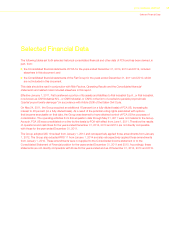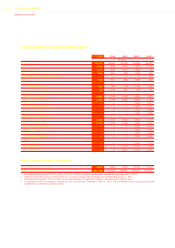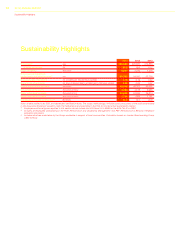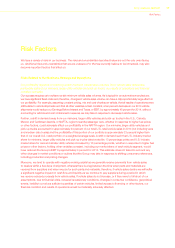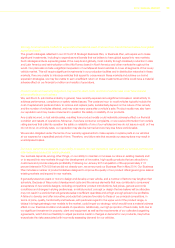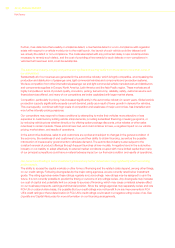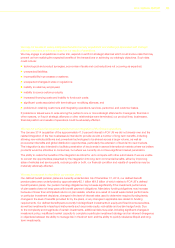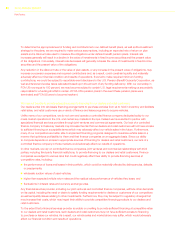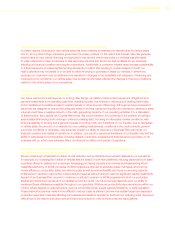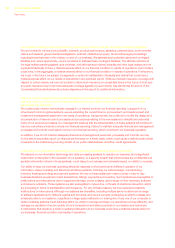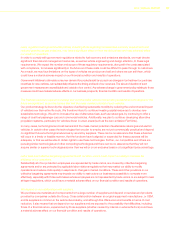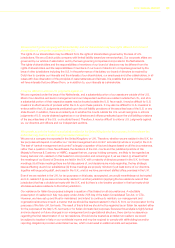Chrysler 2014 Annual Report Download - page 23
Download and view the complete annual report
Please find page 23 of the 2014 Chrysler annual report below. You can navigate through the pages in the report by either clicking on the pages listed below, or by using the keyword search tool below to find specific information within the annual report.
2014 | ANNUAL REPORT 21
We may not be able to realize anticipated benefits from any acquisitions and challenges associated with strategic
alliances may have an adverse impact on our results of operations.
We may engage in acquisitions or enter into, expand or exit from strategic alliances which could involve risks that may
prevent us from realizing the expected benefits of the transactions or achieving our strategic objectives. Such risks
could include:
technological and product synergies, economies of scale and cost reductions not occurring as expected;
unexpected liabilities;
incompatibility in processes or systems;
unexpected changes in laws or regulations;
inability to retain key employees;
inability to source certain products;
increased financing costs and inability to fund such costs;
significant costs associated with terminating or modifying alliances; and
problems in retaining customers and integrating operations, services, personnel, and customer bases.
If problems or issues were to arise among the parties to one or more strategic alliances for managerial, financial or
other reasons, or if such strategic alliances or other relationships were terminated, our product lines, businesses,
financial position and results of operations could be adversely affected.
We may not achieve the expected benefits from our integration of the Group’s operations.
The January 2014 acquisition of the approximately 41.5 percent interest in FCA US we did not already own and the
related integration of the two businesses is intended to provide us with a number of long-term benefits, including
allowing new vehicle platforms and powertrain technologies to be shared across a larger volume, as well as
procurement benefits and global distribution opportunities, particularly the extension of brands into new markets.
The integration is also intended to facilitate penetration of key brands in several international markets where we believe
products would be attractive to consumers, but where we currently do not have significant market penetration.
The ability to realize the benefits of the integration is critical for us to compete with other automakers. If we are unable
to convert the opportunities presented by the integration into long-term commercial benefits, either by improving
sales of vehicles and service parts, reducing costs or both, our financial condition and results of operations may be
materially adversely affected.
We may be exposed to shortfalls in our pension plans.
Our defined benefit pension plans are currently underfunded. As of December 31, 2014, our defined benefit
pension plans were underfunded by approximately €5.1 billion (€4.8 billion of which relates to FCA US’s defined
benefit pension plans). Our pension funding obligations may increase significantly if the investment performance
of plan assets does not keep pace with benefit payment obligations. Mandatory funding obligations may increase
because of lower than anticipated returns on plan assets, whether as a result of overall weak market performance
or particular investment decisions, changes in the level of interest rates used to determine required funding levels,
changes in the level of benefits provided for by the plans, or any changes in applicable law related to funding
requirements. Our defined benefit plans currently hold significant investments in equity and fixed income securities,
as well as investments in less liquid instruments such as private equity, real estate and certain hedge funds. Due
to the complexity and magnitude of certain investments, additional risks may exist, including significant changes in
investment policy, insufficient market capacity to complete a particular investment strategy and an inherent divergence
in objectives between the ability to manage risk in the short term and the ability to quickly rebalance illiquid and long-
term investments.


